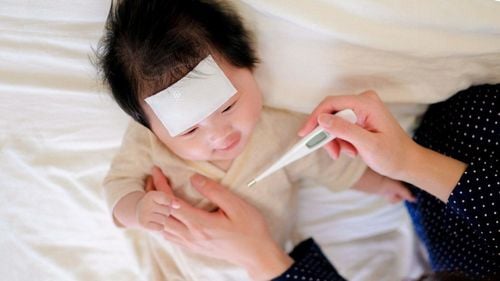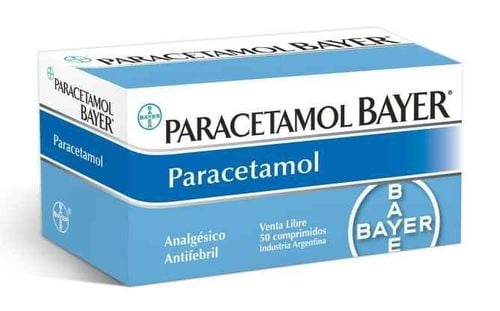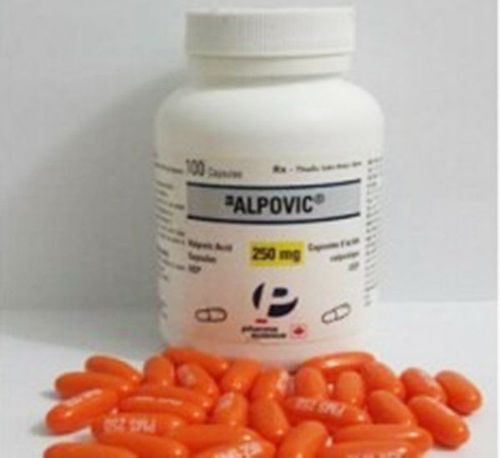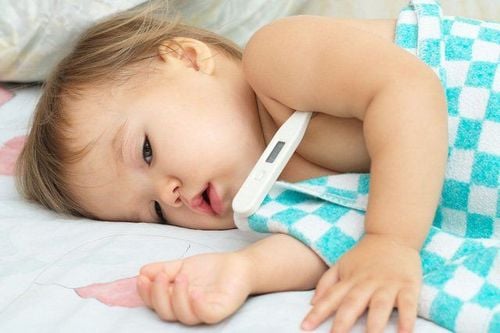This is an automatically translated article.
The article was professionally consulted by Specialist Doctor II Le Thanh Cam - Department of Pediatrics - Neonatology - Vinmec Danang International General Hospital.Fever is a very common symptom in young children, this expression can be caused by many different causes such as bacterial infection, virus or body reaction after vaccination... So the question is If the child has a fever, what to do?
1. What is a fever?
A normal human body temperature is normally maintained between 36 degrees Celsius and 37.4 degrees Celsius. Fever is defined as when the body temperature rises above this normal range (>37.5 degrees Celsius). Fever is classified into many different levels, including:
Mild fever: body temperature from 37.5 degrees C - 38 degrees C; Moderate fever: body temperature from 38 degrees C - 39 degrees C; High fever: body temperature from 39 degrees C - 40 degrees C; Very high fever: body temperature above 40 degrees Celsius. However, the degree of fever may not accurately reflect the severity of the illness causing the fever. Children can have a very high fever, but if the cause is found and the right treatment is given, the fever will go away. In contrast, children who have a low fever but cannot find the cause are sometimes more dangerous.
2. How to identify a child with a fever
Use home temperature measuring devices such as mercury thermometers, electronic thermometers. However, for young children, an electronic thermometer should be used because it is easy to use, gives faster results and limits the danger because mercury thermometers are very fragile, extremely dangerous when mercury is released.
The locations used to measure the child's temperature include: mouth, armpit, anus. It is still best to be in the armpit because it is both accurate and limited other harmful effects.
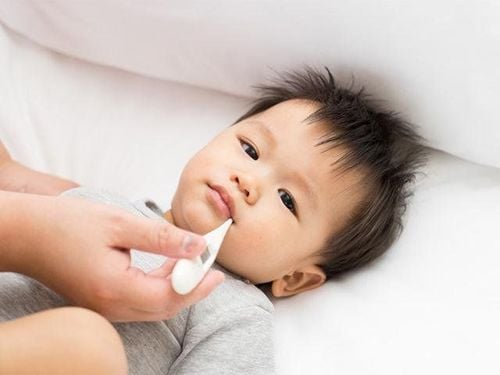
Khi bé sốt có thể đo nhiệt độ tại miệng
3. Causes of fever in young children
Fever is considered a self-defense response of the body, helping to protect the body against foreign agents that attack the body. Fever shows that the child's immune system has recognized and reacted to harmful agents to the child's body. In some cases, even though they have an infection, they still don't have a fever, such as infants with weak immune systems or children with immunodeficiencies who do not have fever when attacked by bacteria and viruses. Common causes of fever include:
Infections caused by bacteria or viruses such as: pneumonia, respiratory infections, digestive infections, urinary tract infections, skin infections or worse like sepsis...; Infection with parasites such as malaria, fluke infection...; Autoimmune diseases; Malignant diseases; Sometimes a fever occurs after a vaccination or a baby starts teething, this is a completely normal response of the body. If fever is caused by these causes, it usually does not last more than 2 days.
4. At what age do you usually have a fever?
Fever regardless of age, sex. Children of any age can have a fever. However, the younger the age, the higher the risk of catching a fever and the severity of the fever. The most important thing is to find out the cause of the fever for appropriate treatment, to avoid having a continuous and prolonged fever that will negatively affect the child's neurological development.
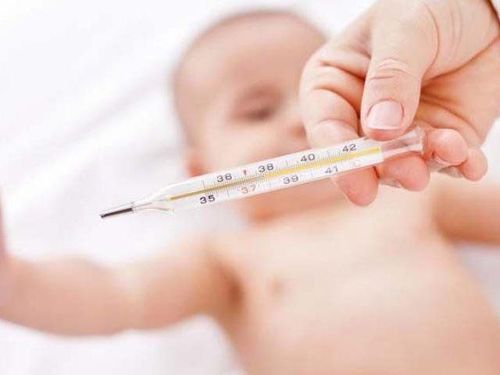
Ở độ tuổi càng nhỏ, trẻ có nguy cơ sốt cao hơn và nguy hiểm hơn
5. Dangerous cases of fever
High fever that is difficult to lower, poorly responsive to fever-reducing measures such as medication or active cooling... Fever accompanied by other dangerous symptoms such as vomiting, difficulty breathing, startling panic, cold hands and feet Legs... Continuous high fever lasting more than 2-3 days or recurrent fever lasting more than 1 week. High fever in children under 3 months of age. The above cases need to take the child to medical facilities to find the cause and appropriate treatment. Avoid self-care for children at home, which not only does not help children with fever but also greatly affects their health.
6. What to do when a child has a fever?
What to do when a child has a fever is a big question for many parents. How to take care of a child with a fever is very simple, but not everyone does it right:
The first thing to do to answer the question of what to do when a child has a fever is to place the child in a well-ventilated room, away from drafts and limited space. limit the number of people around; After that, take off some clothes for the child, only a thin layer of clothing should be worn to make it easier for the body to dissipate heat; Using fever-reducing drugs: When the child's armpit temperature is over 38 degrees Celsius, parents should give the child a fever-reducing drug Acetaminophen (Paracetamol) with a dose of 10-15mg/kg body weight/time, repeat every time. 4-6 hours if the child still does not have a fever. Do not arbitrarily combine other fever-reducing drugs such as ibuprofen or aspirin because they cause many side effects for children; Active cooling: In addition to using medicine, parents should combine with wiping the child's body with warm water to have a higher fever reduction effect; Give your child plenty of water to drink to prevent dehydration
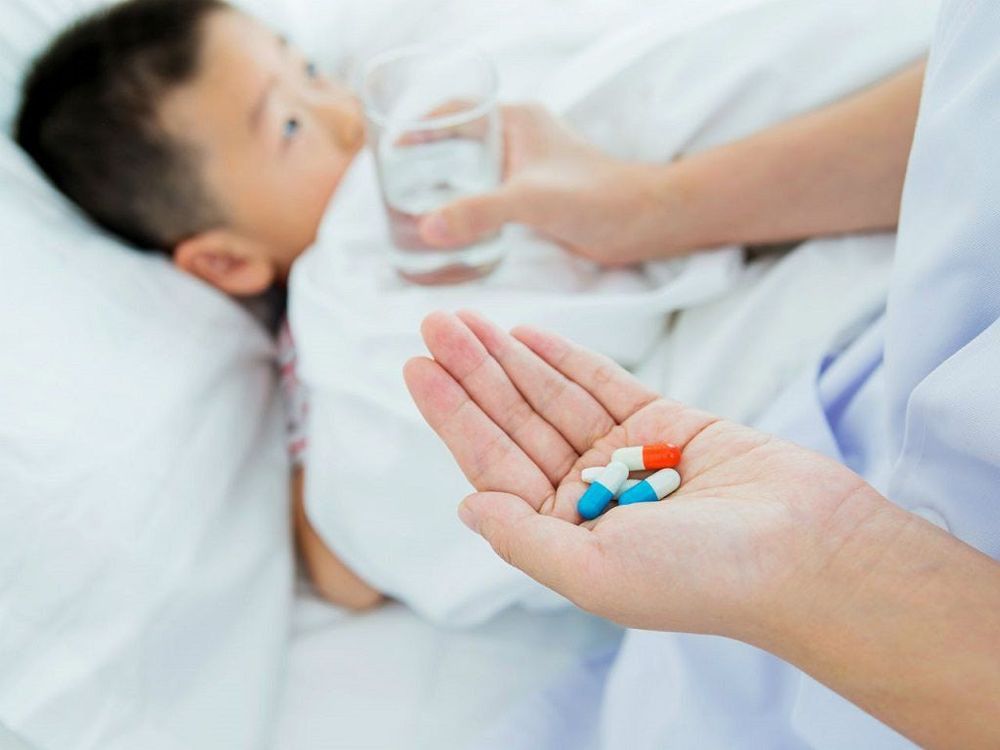
Cha mẹ cần cho trẻ uống thuốc theo chỉ định của bác sĩ
7. Instructions on how to actively cool down to effectively reduce fever
Prepare tools
5 small, thin towels with good water absorption; Thermometer: electronic or mercury; Mix cool cleaning water with a ratio of 2: 1 (cold water: boiling water). Parents can check the water temperature by dipping their elbows in a bowl of warm water like baby bath water. Practice
Hand hygiene; Let the child lie on his back on the bed; Remove or expand the child's clothing; Use a towel dipped in a basin of water, wring out the water and wipe the whole body for the child, mainly in the following positions: forehead, armpit, groin, palm, foot. Should put 2 towels on the 2 sides of the armpits and 2 towels on the 2 sides of the child's groin; When the towel cools down, dip it back into the water, wring it out and repeat the above action until the temperature drops; When the water in the basin is no longer warm, change the basin or add more hot water, check the temperature of the water and continue to wipe the child; Re-measure the baby's temperature every 15-30 minutes to check for temperature changes. Stop wiping the child when the temperature is below 37.5 degrees Celsius; Dry the child and redress the child in light clothes.
8. Nutrition for children with fever
When a child has a fever, the body is often weak, so it is easy to lose appetite, parents need to pay special attention to nutrition. Food for children with fever needs to be liquid, soft and easy to swallow, rich in nutrients, added salt, vitamins, easily digestible protein (meat, fish...), zinc (beef, chicken, etc.) ...) and should be cooked with vegetables. Therefore, when having a fever, porridge is the preferred choice for children, low in seasoning, low in fat and good for digestion. Mothers should cook slightly diluted porridge to help children not lose their appetite. So what should a child eat with a fever? Suggested porridge dishes for mothers when their children have a fever:Beef porridge: contains a lot of protein, zinc, iron, protein, calcium... to help compensate for the body's nutrition; Pork porridge with perilla leaves: rich in B1, B12, B6, D along with protein, phosphorus, potassium, zinc... necessary when children are sick. Perilla leaves help with anti-oxidant, anti-allergic, anti-inflammatory; Chicken porridge: helps to reduce fever, treat sore throat, runny nose in both adults and children;
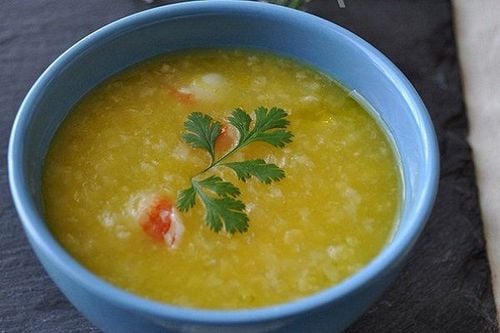
Cho bé ăn cháo khi trẻ bị sốt
Green bean porridge: rich in amino acids, helping to produce immune antibodies, anti-inflammatory, and effective antipyretic; Egg porridge - perilla: helps to treat cough, reduce fever quickly; Cereal porridge: high fiber content and nutritional value, easy to digest when the child has a fever; Pumpkin porridge: high vitamin A content, stabilizing platelets in dengue fever; Eel porridge: mildness, sweet taste, tonic gas, nourishing blood, helps strengthen tendons, clear heat, laxative. When your child has a fever that doesn't go down for a long time, you should immediately take your child to a reputable medical facility to be examined, find out the cause, and get definitive treatment.
When a child has a fever, the body is often weak, so it is easy to lose appetite, parents need to pay special attention to nutrition. Food for children with fever needs to be liquid, soft and easy to swallow, rich in nutrients, supplemented with salt, vitamins, easily digestible protein (meat, fish, etc.), zinc (beef, chicken, etc.) ...) and should be cooked with vegetables.
Therefore, when having a fever, porridge is the preferred choice for children, low in seasoning, low in fat and good for digestion. Mothers should cook slightly diluted porridge to help children not lose their appetite. So what should a child eat with a fever? Suggested porridge dishes for mothers when their children have a fever:
Beef porridge: contains a lot of protein, zinc, iron, protein, calcium... to help compensate for the body's nutrition; Pork porridge with perilla leaves: rich in B1, B12, B6, D along with protein, phosphorus, potassium, zinc... necessary when children are sick. Perilla leaves help with anti-oxidant, anti-allergic, anti-inflammatory; Chicken porridge: helps to reduce fever, treat sore throat, runny nose in both adults and children; Green bean porridge: rich in amino acids, helping to produce immune antibodies, anti-inflammatory, and effective antipyretic; Egg porridge - perilla: helps to treat cough, reduce fever quickly; Cereal porridge: high fiber content and nutritional value, easy to digest when the child has a fever; Pumpkin porridge: high vitamin A content, stabilizing platelets in dengue fever; Eel porridge: mildness, sweet taste, tonic gas, nourishing blood, helps strengthen tendons, clear heat, laxative. When your child has a fever that doesn't go down for a long time, you should immediately take your child to a reputable medical facility to be examined, find out the cause, and get definitive treatment.
For children with fever, nutrition is very important. Parents should supplement their children with supporting products containing lysine, essential micro-minerals and vitamins such as zinc, chromium, selenium, and B vitamins to help fully meet the nutritional needs of children. At the same time, these essential vitamins also support digestion, enhance nutrient absorption, help improve anorexia, and help children eat well.
Parents can learn more:
Signs of zinc deficiency in children
Micronutrient deficiency and failure to gain weight in children
Please regularly visit Vinmec.com website and update useful information to take care of your child. Take care of the baby and the whole family.





